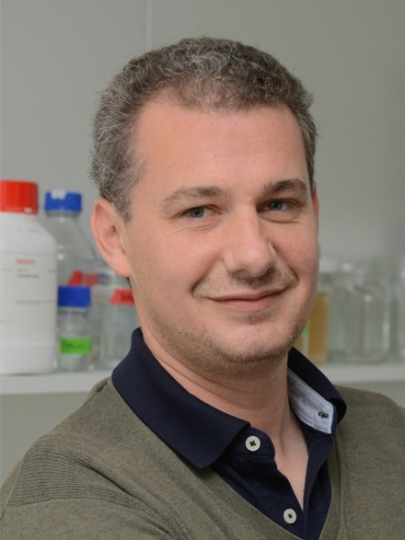Camille LobryLaboratoire de Hématopoïèse normale et pathologique à l'Institut Gustave Roussy - Inserm / Université Paris Sud
Mes recherches
My research focuses on the role of non-coding genome in the development of blood cancers and most particularly Acute Myeloid Leukemia. I use combination of epigenetics, genomic and screening technologies based on high throughput sequencing to interrogate enhancer dysregulation and long non-coding RNA function in leukemia.
I did my PhD in the laboratory of Pr Alain Israel at the Pasteur Institute in Paris. During my PhD I studied post translational modifications of the BCL10 protein involved in the regulation of NF-kB activity in T cells. I identified a novel phosphorylation of BCL10 induced by IKKbeta acting has a novel regulatory feedback loop in TCR induced NF-kB activation. Impact of these results range from basic immunology to lymphoma transformation as BCL10 and NF-kB hyper-activation are involved in Mucosa Associated with Lymphoid Tissue lymphoma transformation.
Then I did my postdoctoral fellowship in Pr Iannis Aifantis laboratory at New York University School of Medicine where I studied Notch signaling pathway in early hematopoiesis and myeloproliferative disorders. Using several novel in vivo genetic models of NOTCH inactivation and activation I was able to identify a new tumor suppressor role for this signaling pathway in myeloid hematological disorders.
Following my Postdoc, I started my own team at Gustave Roussy Cancer Center near Paris, France thanks to an ATIP-Avenir grant.
Mon projet ATIP-Avenir
Elucidation of genetic and epigenetic mechanisms controlling hematopoietic stem cells maintenance and transformation to acute myeloid leukemia
Acute Myeloid Leukemia (AML) is the most common acute leukemia diagnosed in adults and is accounted for approximately 25000 new diagnosed cases per year in Europe. Despite the use of chemotherapy and stem cell transplantation, AML has a dismal overall 5-year survival of 24% and almost 50% of AML patients relapse after treatment. Currently, there are no targeted therapies for this disease making the study of the molecular mechanisms of its induction and progression of biologic and clinical significance. To date most efforts in understanding AML induction and progression have focused on the protein-coding genome, which in humans represents less than 2% of all our genetic material.
Non-coding regions in the genome play an important role in regulating gene transcription. These regions encompass insulators, enhancers and non-coding RNA. Recently, Super Enhancers (SE) have been characterized as single or group of enhancers with unusual strong enrichment for binding of transcriptional co-activators and strong modifications of histone tails. SE can be virtually defined in any cell type and tend to be highly cell type specific.
The human transcriptome is composed not only of protein-coding mRNA, but also a significant proportion of non-coding RNA (ncRNA). This finding has challenged the central dogma of molecular biology as ncRNAs do not act as intermediates between DNA and peptide, but rather function as regulatory molecules. Long non-coding RNAs (lncRNA) have recently become an attractive area of study as whole-transcriptome data has shown that their cellular abundance may be similar or even higher than that of mRNA and their expression appears to be highly tissue specific. Importantly, one of the key functions of lncRNA is to target chromatin modifiers to specific loci.
Cancer cells often present with altered gene expression patterns and enhancer usage compared to their normal counterparts. Particularly, SE tend to be enriched around and control genes known to play oncogenic functions. Also, several reports have implicated lncRNAs in the regulation of oncogene and tumor suppressor transcription in cancer. Therefore, understanding SE and lncRNA functions could help decipher complex coordinated gene expression programs that lead to oncogenesis.
